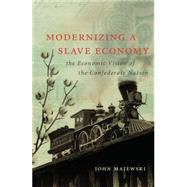
What is included with this book?
| Acknowledgments | p. xi |
| introduction | p. 1 |
| Shifting Cultivation, Slavery, and Economic Development | p. 22 |
| Agricultural Reform and State Activism | p. 53 |
| Explaining Lieber's Paradox: Railroads, State Building, and Slavery | p. 81 |
| Redefining Free Trade to Modernize the South | p. 108 |
| Economic Nationalism and the Growth of the Confederate State | p. 140 |
| statistical appendix The Origins and Impact of Shifting Cultivation | p. 163 |
| Notes | p. 181 |
| Secondary Literature and Primary | |
| Sources | p. 221 |
| Index | p. 233 |
| Table of Contents provided by Ingram. All Rights Reserved. |
The New copy of this book will include any supplemental materials advertised. Please check the title of the book to determine if it should include any access cards, study guides, lab manuals, CDs, etc.
The Used, Rental and eBook copies of this book are not guaranteed to include any supplemental materials. Typically, only the book itself is included. This is true even if the title states it includes any access cards, study guides, lab manuals, CDs, etc.